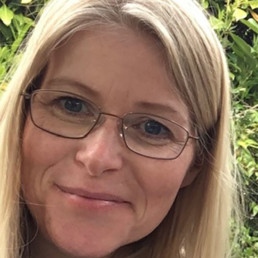
Written by Helen Weston
Helen has two children with significant medical needs which has resulted in her becoming their part time nurse, teacher and advocate whilst simultaneously attempting to be a reasonable parent! Prior to this she worked in Early Years and family support.
Inclusion is a perpetual discussion amongst both teachers and parents alike. This is likely because it has a number of different interpretations which aren’t always agreed upon, it can also be both an ethos and an action. I want all children to feel safe and secure, welcome and considered whilst being educated. My son wants to be remembered that he exists.
As a parent of two children with chronic health needs, the navigation of an equitable education for them has been incredibly challenging. During the last 11 years my children have experienced the best and worst of inclusive practices in various schools.
Effective inclusive practice in my experience always comes from attitudes and ethos and never from expectations of statutory requirements. Funding has been entirely irrelevant, no amount of funding can influence cultural shift. Ethical leaders create that, not money. If a Head is unable to easily explain how their policies and planning sit within the Equality Act, for example, a rigid 100% attendance award policy, yet has an inclusion poster in their reception area, then as a parent, I know my child will never feel a sense of belonging or self worth in this school.
Schools that are child centred rather than data driven always value inclusion, they offer a genuine partnership with families and a proactive approach, again this starts with leadership and is embedded within the every day workings of the school. Teachers who are prepared to listen, reflect and act, can make a huge difference to a child’s perception of their illness or disability and reduce their feelings of difference. This enables them to be more readily able to learn.
One of my children has only ever been able to attend school on a part time basis due to his health. For 4 years he attended his school every morning, his school thought they were inclusive for facilitating a part time timetable, yet he was never offered a broad and balanced curriculum. He was only ever taught Maths and English despite regularly requesting to learn science or do PE with his peers, but their timetable was rigid.
We eventually moved him to a neighbouring school, the difference in attitudes was remarkable. He was listened to and the timetable was swapped around. For the first time in his school career he did PE, science, & enrichment. He was 9 years old. He also took part in his first ever Christmas concert because the practices were moved to the mornings so he could be involved . He had real friends for the first time, adults had role modelled to them that he was an equally valuable member of the school community. His friends looked out for him, helped him, cared for him because this was the ethos of the school and these values were their norm.
At his previous school he had had long periods of time off unwell, upon return to school, staff and children alike would rarely ask after his well-being. In contrast, in his new school his teacher set up a video call with him and his classmates so they could have a chat and check in with one another.
She would also provide him with allergy safe treats when giving a whole class reward. He had never experienced this before. Ultimately inclusion was everyone’s responsibility and not just the role of the ‘Inclusion Manager.’ My experience identified that by outsourcing inclusion to just one individual, others were removed from ever having any consideration for inclusion.
School trips can be a real eye opener as to how inclusive schools are. We have had numerous experiences of schools not bothering to plan for accessibility or do risk assessments therefore having to do them myself last minute ( and on one occasion discovering the activity was unsafe for our son’s medical condition.)
Yet there have also been examples of how early planning and communication can enable trips to be successful, not just practically, but also emotionally positive. My son attended a school residential as a day visitor. The timings of his visits were chosen in collaboration with him, myself, school as well as the activity centre, to ensure he was able to access all the activities offered at that time safely. He was still allocated a room and a bed, his tube feeds were fitted around activities, pacing was done subtly, a special harness was used. Almost three years later, he still talks about that trip with such joyful memories.
The ‘what can we do’ approach is the best way of creating meaningful change, including the child & parents in working through solutions in partnership with schools. My youngest is now in secondary and I note with interest, their use of their term, ‘flexible’, over inclusion. Right now, this is what works best for my son, flexibility, trust and regular communication. Inclusion is not the same for every child but the essence of belonging should feel the same for all.

